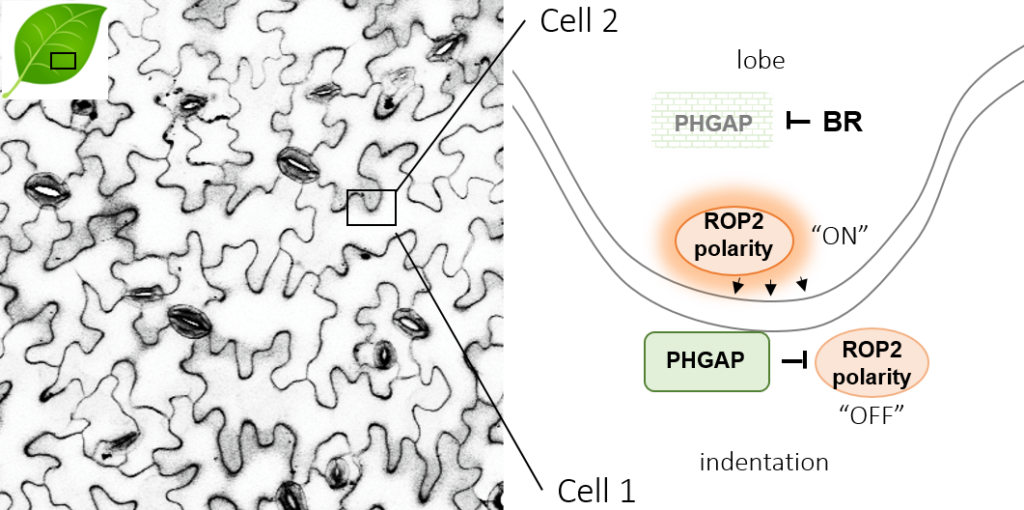How cells control their shape
Local deactivation of cell polarity signals is necessary for the development of multipolar cell shapes
The plant epidermis is the primary tissue of the shoot and leaves of plants. The so-called pavement cells of the epidermis are complex and multipolar in shape and interlock like pieces of a puzzle. This shape appears to be related to the specific functions of the epidermis such as defense against pathogens, response to environmental stress, mechanical strength, gas exchange, controlled uptake of water and nutrients, but also tasks during organ development.
The team of Prof. Dr. Sabine Müller (Heisenberg Professor of Cellular Morphogenesis in the Department of Biology) now reports in two publications how plant cells of the leaf epidermis develop their interlocking “puzzle” shape.
The researchers identified two related proteins as key players in the establishment of cell polarity gradients in epidermal pavement cells that regulate cell polarity signaling (ROP2 signals). These proteins, called PHGAP/RENs (PLECKSTRIN HOMOLOGY GTPase ACTIVATING PROTEINS), deactivate cell polarity signals (ROP2 signaling) at specific sites on the cell membrane, causing local inhibition of cell expansion. The results of this study demonstrate the importance of spatial and temporal control over polarity signaling for the orchestrated establishment of multipolarity in the pavement cells.
In addition, brassinosteroid (BR) hormones affect the interlocking of epidermal pavement cells, but the exact mechanism has been unclear so far. In collaboration with researchers from the Center for Plant Systems Biology in Ghent, Belgium, the PHGAP proteins were identified as target proteins of brassinosteroid signaling, which destabilize PHGAP at the cell membrane of the nascent cell lobes of pavement cells and consequently enable polarized expansion at these sites. These findings link brassinosteroid hormone signaling to cell polarity via the regulation of PHGAPs, and thus explain how these hormones contribute to the control of pavement cell interlocking.

Confocal micrograph of the interlocked leaf epidermal pavement cells of Arabidopsis thaliana and schematic representation of the cell polarity signaling pathway.
Original publications
https://www.cell.com/current-biology/fulltext/S0960-9822(21)01729-2
https://www.cell.com/current-biology/fulltext/S0960-9822(21)01730-9
Further information
Prof. Dr. Sabine Müller
+ 49 9131/85-28522
sabine.sm.mueller@fau.de
